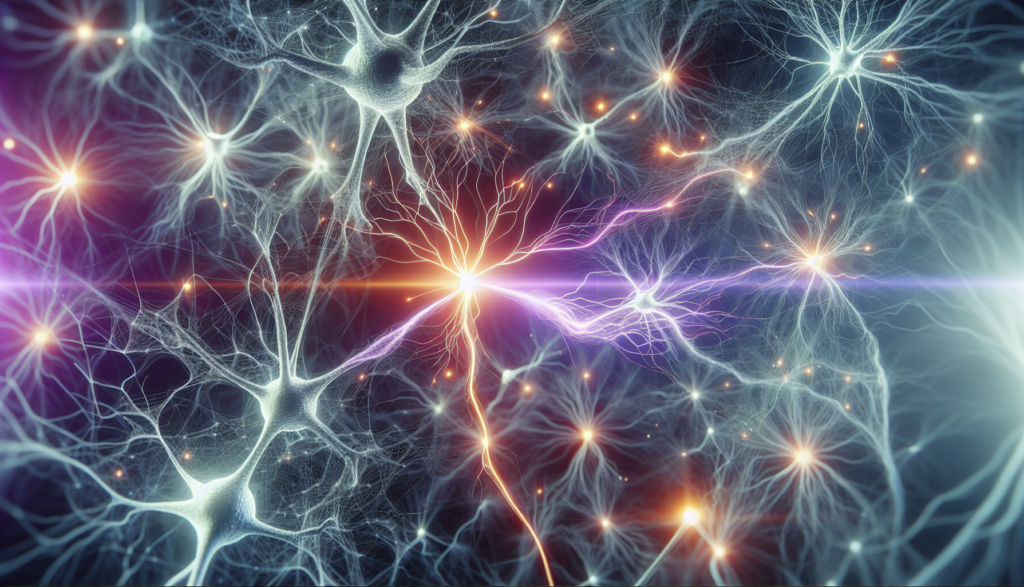In a world where our habits shape our daily lives, wouldn’t it be empowering to know that you can literally rewire your brain to break old habits and form new ones? That’s where the science of neuroplasticity comes into play — a phenomenon that can help you reshape your behaviours, routines, and ultimately your success.
Let’s explore how neuroplasticity works and how you can harness it to build better habits.
IN THIS ARTICLE:
–> What Is Neuroplasticity?
–> How Does Neuroplasticity Work?
–> Why Are Bad Habits So Hard to Break?
–> How to Use Neuroplasticity to Form New Habits
–> How to Break Old Habits
What Is Neuroplasticity?
Neuroplasticity refers to the brain’s incredible ability to reorganise and form new neural connections throughout your life. Think of your brain as a flexible web of highways — each thought, action, or experience strengthens certain pathways, while others fade away.
For a long time, scientists believed that our brains were set in stone after a certain age. But we now know that your brain is always evolving, even as an adult. Every time you learn something new or repeat a behaviour, you are reshaping your brain’s wiring. This is excellent news for anyone looking to build new habits or let go of old ones.
How Does Neuroplasticity Work?
When you repeat a thought or behaviour, your brain strengthens the connection between the neurons involved in that activity. Think of it like walking a new path in the woods — it’s difficult the first time, but the more you walk it, the clearer and easier it becomes to navigate. The same goes for habits: the more you perform a habit, the more ingrained it becomes in your brain.
Over time, frequently repeated behaviours become automatic because the neural pathways involved in that action become well-worn trails. This is great news for positive habits — but it’s also why bad habits can be so hard to break.
Why Are Bad Habits So Hard to Break?
The pathways for bad habits are strong because you’ve spent years reinforcing them. For example, if you procrastinate or indulge in unhealthy eating, each repetition strengthens those neural pathways. This is why it’s often easier for your brain to stick with these well-worn habits rather than adopt new, healthier behaviours.
But don’t lose hope! The same principle that created those bad habits can also help you break them. Taking advantage of neuroplasticity, you can actively weaken old pathways while creating new ones. It just takes consistent effort and time.
How to Use Neuroplasticity to Form New Habits
Now that we understand the science, let’s look at how to use neuroplasticity to form new habits. Here are three practical tips:
1. Start Small and Be Consistent
Your brain loves repetition but hates feeling overwhelmed. Instead of trying to make massive changes all at once, start with small, manageable steps that you can consistently do every day. For example, if you want to exercise, start with five minutes a day. Over time, as you repeat the behaviour, you’ll strengthen the new pathway in your brain, making it easier to maintain the habit.
How Long Does It Take to Develop a New Habit?
You might've heard that it takes 21 days to form a habit, but recent research suggests that this timeframe can vary. According to Phillippa Lally’s research published in the European Journal of Social Psychology on average, it takes 66 days for a new behaviour to become automatic, depending on the complexity of the habit and individual factors. Some habits may take as little as 18 days to stick, while others can take more than 250 days.
The key to success is consistency — repetition strengthens the neural pathways that turn conscious efforts into automatic routines.
2. Use Habit Stacking
One powerful technique for forming new habits is called habit stacking. This involves attaching a new habit to an existing one. Since your brain already has strong pathways for habits you do regularly — like brushing your teeth or making coffee — you can ‘stack’ a new habit onto one of these activities. For example, if you want to meditate, do it right after brushing your teeth in the morning. This way, the old habit acts as a trigger for the new one, helping your brain form a connection more quickly.
3. Utilise Mistakes and Keep Going
Change doesn’t happen overnight. You’ll likely slip up now and then, but the key is not to give up. Each time you return to your new habit after a mistake, you’re reinforcing that neural pathway. Think of it like two steps forward, one step back — the progress is still happening, even with minor setbacks. Be patient with yourself, and keep moving forward. Yet, when you don’t give up and carry on, not only do you identify your weak spots and triggering events that made you go back but you also reinforce your determination.
How to Break Old Habits
Breaking old habits is just as important as forming new ones, and it follows the same principles of neuroplasticity. Here’s how to disrupt old, ingrained behaviours:
1. Becoming Aware of Triggers and the Power of Conscious Choice
When it comes to breaking old habits, the first critical step is identifying the triggers — those situations, emotions, or environments that lead to your habitual behaviour. Triggers are the moments where the automatic loop of the habit begins, and recognising them is crucial because it’s at this point that you can make a conscious choice to change your response.
While we can become aware of these triggers, we aren’t always immediately conscious of the underlying intention behind the behaviour. Often, even negative habits serve a hidden positive purpose, such as providing comfort, distraction, or relief from stress. Without identifying this underlying need, it becomes more challenging to let go of the habit, as your brain still associates the behaviour with fulfilling a deeper emotional requirement.
2. Why Self-Awareness and Mindfulness Matter
Self-awareness is the foundation for any behaviour change. This is where mindfulness comes into play, helping you slow down and observe your thoughts, feelings, and urges in real-time.
Mindfulness helps us to stay present — by becoming aware of our inner narrative, which often serves as a driving force of our behaviours — and disrupts the automatic loop of bad or unwanted habits.
Research published in the Journal of Clinical Psychology (2014) shows that mindfulness can improve emotional regulation, helping us respond to triggers more thoughtfully. In particular, mindfulness creates a pause between the trigger and the habitual response, allowing us to make an intentional choice rather than react impulsively.
3. Coaching and Hypnosis: Methods for Deep Change
When mindfulness and self-awareness aren’t sufficient to break old habits, methods offered by coaching and hypnosis allow deeper, unconscious transformation.
Coaching often involves behaviour modification techniques to help you change your response to triggers. Coaches guide clients to explore the root causes of their behaviours and build personalised strategies to rewrite their patterns over time.
Hypnosis works by tapping into one’s unconscious mind, where habitual behaviours are stored. Through hypnosis, we can reprogram our responses, replacing old behaviours with healthier alternatives that align with the underlying positive intention of the habit. This makes it a powerful tool for rapid change, especially for those struggling with deeply ingrained patterns.
Rewiring Your Brain for Success
To sum up, neuroplasticity gives you the power to reshape your brain and habits. Start small, use techniques like habit stacking, and embrace your mistakes as part of the learning process. When it comes to breaking old habits, becoming aware of your triggers, practising mindfulness, and, when necessary, utilising powerful methods like coaching or hypnosis can make all the difference.
The more you practice these techniques, the more you’ll strengthen new, healthier neural connections in your brain — setting yourself up for long-term success.
Until next time, keep your brain training — one habit at a time!



